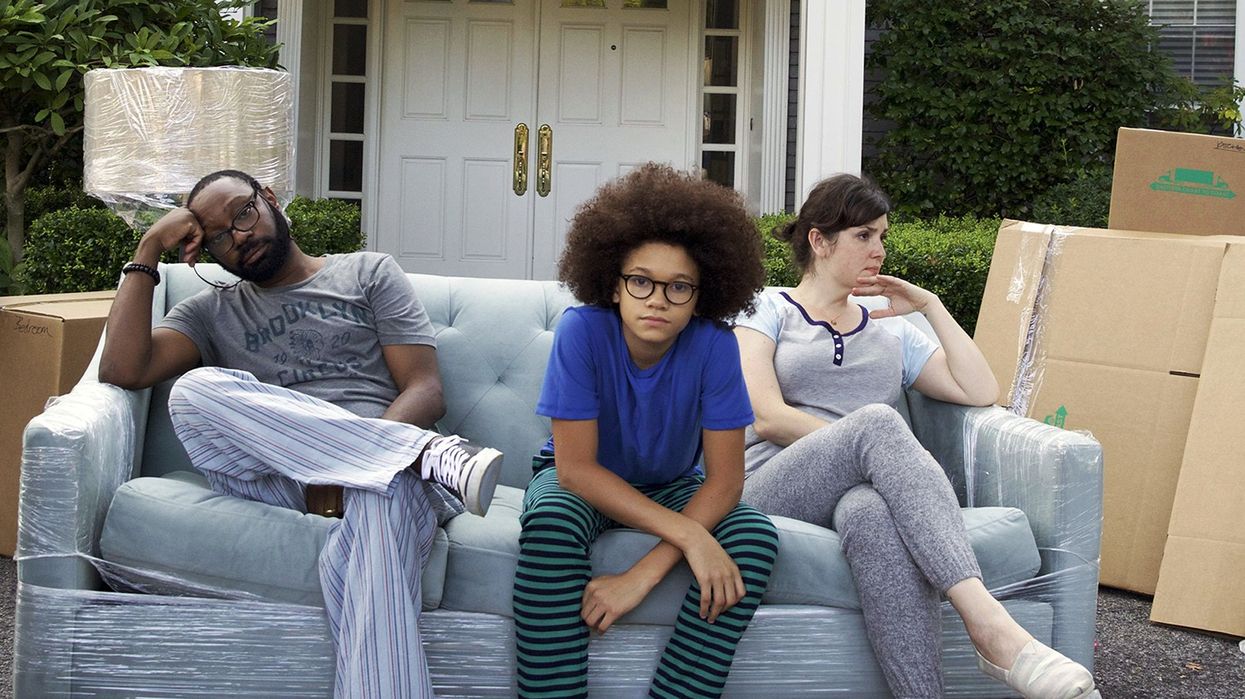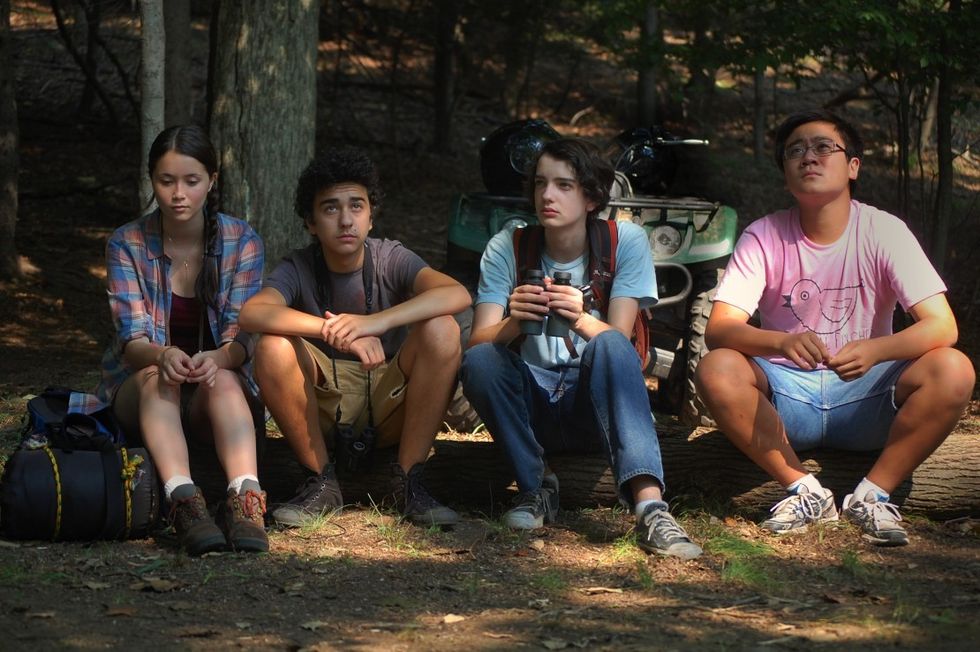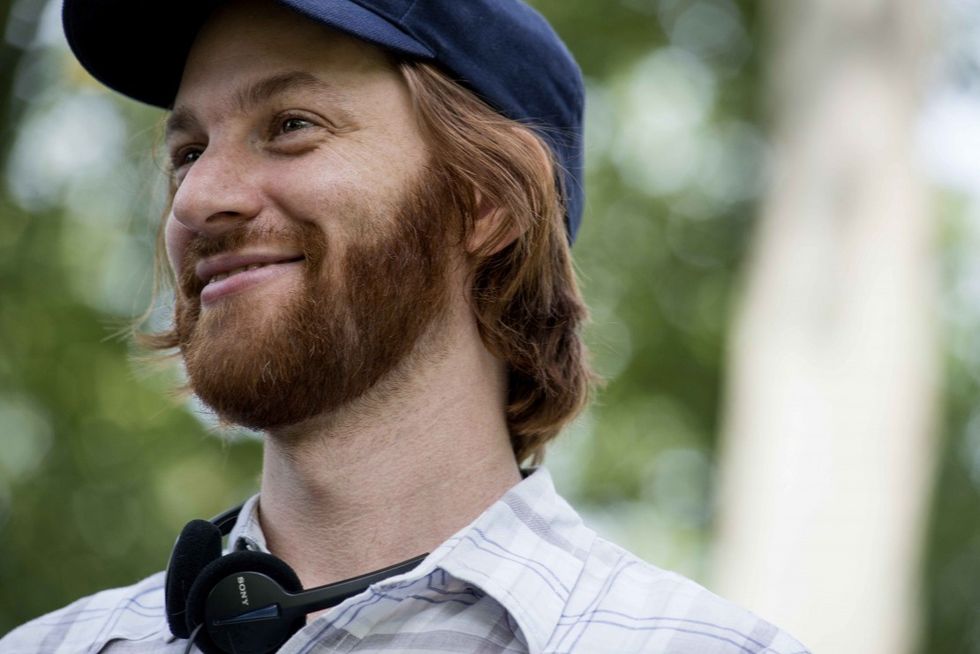Mumblecore Grows Up in Cary Fukunaga-Produced 'Little Boxes'
A small-scale dramedy tackles some big questions about living in modern America as an interracial family.

Directed by Rob Meyer (A Birder’s Guide to Everything) and executive-produced by the red-hot Cary Fukunaga, Little Boxes follows an artist couple as they relocate from New York to a Pacific Northwest college town where photography professor Gina (Melanie Lynskey) has secured a new job. Her novelist husband Mack (Nelsan Ellis) reluctantly acquiesces to the move, even though his new status as the only black man in town attracts unwanted attention from the well-meaning white people who surround him. Meanwhile, their eleven-year-old son Clark (Armani Jackson) finds himself strangely drawn to a neighborhood girl with an obsessive love of black culture.
Following the film’s April 15 world premiere in Tribeca’s Spotlight section, No Film School spoke with Meyer about shooting in spare sets, balancing naturalism with “mannered reality,” and working with kids.
"Mumblecore gets a bad rap sometimes."
NFS: This film struck me as: “Mumblecore grows up and starts a family and tries to navigate adulthood.” You take the low-key dramatic observations from the genre and put them toward the unique challenges of marriage and parenthood and race in the community.
Meyer: I’m happy with that interpretation. It’s definitely a pretty adult film. It tackles some real issues about parenthood, race, careers, and moving. It also, hopefully, tackles some issues about childhood and growing up. In terms of the aesthetic, I did watch a lot of Noah Baumbach and Joe Swanberg [movies]. Mumblecore gets a bad rap sometimes, but those films that are handheld and low-key, where the filmmaking just disappears, have the ability to really hit you emotionally in a way that I think mainstream Hollywood, perfectly-lit films struggle to.
I always wanted to shoot it handheld—I actually had the dream of shooting it in Super 16, which I also thought would add to that feeling of rawness and documentary-style, but while also being beautiful. We put a lot of effort into the lighting and blocking and getting the scenes to unfold in a way that the visuals and filmmaking language would help the story—we didn’t want it to feel like we just got on an iPhone and shot it.
"We had minimal props and set dressing, so we had to find ways to make the shots interesting in a house with a lot of bare walls."
NFS: What specific ways did you work to bring that out in production?
Meyer: The best example I could give you is that [cinematographer] Tom Richmond and I spent a good 3-4 days just sitting in the house we had access to before the shoot—it was totally empty. We had it cleared out so there was no furniture in it. And that was mainly what it was going to be like throughout the film. We had minimal props and set dressing, so we had to find ways to make the shots interesting in a house with a lot of bare walls, but also to get a sense of claustrophobia and decay as the film unfolded. And also, I think just us being in the house for that long just started to get in[to] our psyches a bit, so we started to feel it as characters.

For me it’s always about getting into your locations, all your locations, early enough so you can shoot stills and hopefully bring some friends or PAs that can stand in for you to see how things feel. It’s finding the right camera lenses and the right handheld moves and figuring out how it’s going to be blocked, and then hopefully having a plan that is flexible enough that your actors can run with it. We had very little time with the actors, so we were blocking things out with them the day we were shooting.
NFS: Where did you film the “Rome, Washington” scenes?
Meyer: We filmed Rome in Harrison, New York and Newburgh, New York, with all the Main Street stuff and the bars. One of our producers was from Newburgh and introduced us to some soundstages up there that we used. It’s a little unknown filming location that’s pretty close to NYC. Harrison is in the “zone,” which for a low-budget film is what you need. In my ideal world, we would have filmed in Washington, but the budget just wouldn’t stretch to that, and the film credit is great in New York so we wanted to take advantage of that.
"How far can you stretch reality, and can you pull off a line like, 'We totally needed a black kid'?"
NFS: Cary Fukunaga is an EP. It seems like a very different sort of project for him. How did he come on board?
Meyer: Cary and I were classmates at NYU, so that's the easy answer. He’s a very dear friend of mine and we’ve been collaborating—he’s shot stuff for me, I’ve edited stuff for him. You know, when you’re in film school you’re working on each other’s projects. He was in a position now that him coming on and EP’ing helped add momentum to the project; he had ideas for casting and gave me notes. Don’t think you know what [Cary Fukunaga's] normal type of filmmaking is, because I think he really loves all of it. He just sold a comedy to Netflix; he’d love to do musicals. Certainly he has a look and feel of his films, but he likes to work in all genres.

Meyer: You hit the nail on the head. That was the goal and challenge of this film. I didn’t write the script, which was a first for me. The writer [Annie J. Howell] based it on her personal experience—she’s married to an African-American and they have biracial kids and they moved to a very white town. So it was all grounded in some way on her experiences. It came from an emotional place of truth for her, and I worked with the actors to make sure it felt authentic to them.
"I don’t want people thinking about the filmmaking or the script."
Then there’s the matter of, how far can you stretch reality, and can you pull off a line like, “We totally needed a black kid,” which was definitely one where I wasn’t sure whether or not it was something a kid could say and you would believe it. [I wanted to build] the reality of this world so it could support some of those more satirical moments. That tension, of the realism and heightened reality, is what makes the film interesting to me.
NFS: Is the mannered reality something you thought you were making when you were making it?
Meyer: I like to do a range of takes, from very naturalistic to very over-the-top, and then we have the tools in the edit to decide how far we can push it and stretch audiences to make the film uncomfortable and funny. I don’t want people thinking about the filmmaking or the script. If we’d wanted to, we could have made a completely naturalistic film where nothing poked out and all the rough edges were smoothed down, but I don’t think that would be a very interesting film to watch. In the editing, that was what we spent the most time on: how broad, how funny, how tense, how emotional we wanted to go.
"I would be a camp counselor if I weren’t a filmmaker."
NFS: You seem to work a lot with kids, and the kids in this movie are very good. What draws you to stories with kids?
Meyer: I love working with kids. As a filmmaker, I love that age because it’s such an important, formative period. In young adulthood, our brains are literally still forming and we’re making decisions about what direction we want to go. But it’s very funny because we have all these high-stakes, emotional moments happening without being equipped with the tools to cope with them. I would be a camp counselor if I weren’t a filmmaker. I just like the atmosphere on set when it’s a lot of young people. They have fun.
For me, it’s really empowering them that they are the best actors in the world for the roles that they’re in, to get rid of any insecurities and stiffness and trying-too-hard issues, making a cone of “everything’s fine, we’re in no rush, this is no big deal” around them. Because kids pick up tensions. Everything has to be really fun and somewhat low-stakes for kids to relax and be their natural, interesting, wonderful selves.
Be sure to check back for more coverage of Tribeca 2016.











